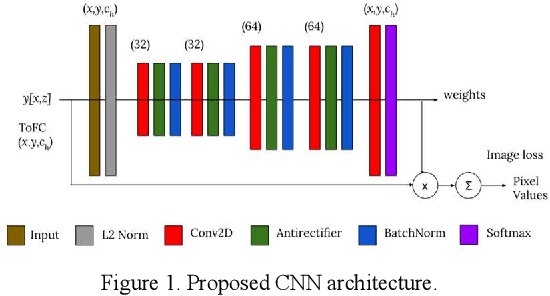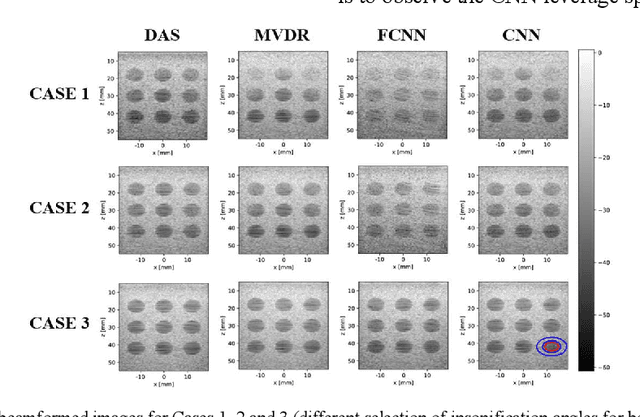Towards Fast Region Adaptive Ultrasound Beamformer for Plane Wave Imaging Using Convolutional Neural Networks
Paper and Code
Jun 13, 2021



Automatic learning algorithms for improving the image quality of diagnostic B-mode ultrasound (US) images have been gaining popularity in the recent past. In this work, a novel convolutional neural network (CNN) is trained using time of flight corrected in-vivo receiver data of plane wave transmit to produce corresponding high-quality minimum variance distortion less response (MVDR) beamformed image. A comprehensive performance comparison in terms of qualitative and quantitative measures for fully connected neural network (FCNN), the proposed CNN architecture, MVDR and Delay and Sum (DAS) using the dataset from Plane wave Imaging Challenge in Ultrasound (PICMUS) is also reported in this work. The CNN architecture could leverage the spatial information and will be more region adaptive during the beamforming process. This is evident from the improvement seen over the baseline FCNN approach and conventional MVDR beamformer, both in resolution and contrast with an improvement of 6 dB in CNR using only zero-angle transmission over the baseline. With the observed reduction in the requirement of number of angles to produce similar image metrics would prove advantageous in providing a possibility for higher frame rates.
 Add to Chrome
Add to Chrome Add to Firefox
Add to Firefox Add to Edge
Add to Edge